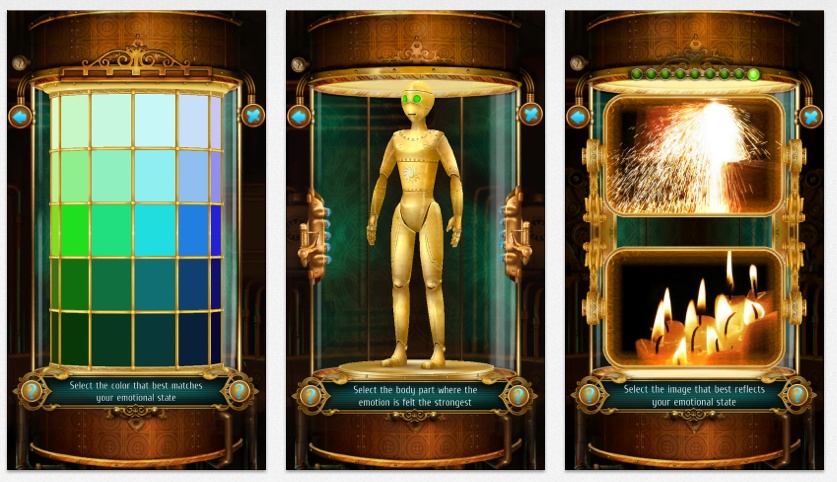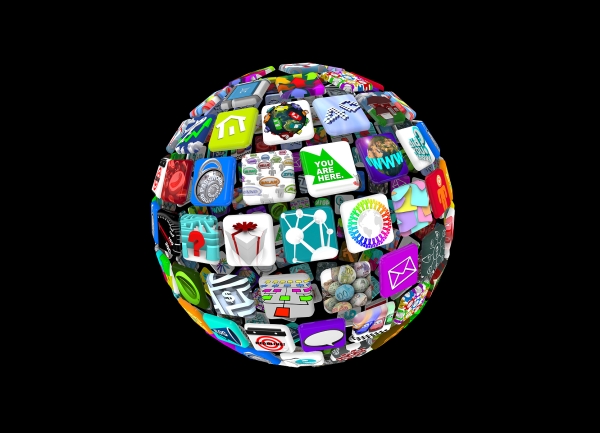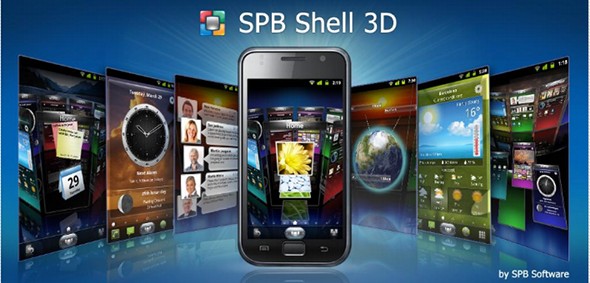Denis Wittmann is an executive producer at Yordapps, which has created this app for iPhone called MyEmotions. The app claims to be able to identify emotions with 90 percent accuracy, based on image selection. Watch the video at the end of the post.
When I say that I develop mobile applications, people often ask me “How much is it to develop an app?” My honest answer is usually “200 dollars and all the way up.” The app will simply print HELLO WORLD on the screen of the phone, it will be rejected by the App Store due to “bad user experience”, but it will work!
The most fascinating thing is that so many developers really manage to create apps for $3,000 and get them approved in the App Store.
Some stories of app developers are strikingly similar to fairy tales starring genies and leprechauns as “magic helpers”. Out of nowhere come designers and musicians that work for free and create pieces of art, while developers spend their nights writing flawless code with diligence and humility that even Cinderella would be dead envious of…
Sometimes, I really want to look them in the eyes and ask: “Guys, which fairytale are you from, exactly?”
In my reality and my own experience of developing a relatively small application for the App Store, this endeavor turns out to be long, expensive and really hard.
Here is a breakdown of major expenses in a mobile app development project, calculated at the lower end of the rates range:
The breakdown is based on our free application called MyEmotions, you can check all of its features without to have an understanding of the project scope. When we started designing the application, we focused on creating a tool that, if used properly, would enable users to talk to their subconscious and get adequate and accurate answers.
Let’s get back to the budget, though.
All of the costs listed are based on “adequate” market rates of skilled professionals or outsourcing companies in Eastern Europe. Apparently, you can find someone who will work for pizza and beer, but this is plain unprofessional. You can make one app this way, but it won’t work if you are creating a studio.
Application design – from $13,000
• Designer (game designer for game projects) – $20-25/h
• Art Director – $30-38/h
• Project Manager – $15-25/h (part-time)
Prior to starting the work on a project, you need to come up with one. We’ll need a general concept, an art bible defining the overall style, sketches, content samples, screen layouts and descriptions of key technologies. The more you have at the start, the easier it will be to move along.
The biggest mistake you can make is to start cutting costs at this stage. We spent way too little time here and had to redo too much stuff later on.
We have developed a fundamental principle for ourselves. During the design stage we must create documents detailed and comprehensive enough to be handed over to an outsourcing partner in full confidence that everything will be done as expected. Five standard 40-hour weeks at $65/h (in total) – and at least 13,000 dollars are gone.
Graphics – from $35,000
• 2D artist – $20-25/h
• 3D modeling artist, animator – $25-35/h
From a layman’s point of view, artists are not just slow, they are epically sluggish. Besides, most of their work commences inside their bright heads or results in subtle changes of color, shapes and camera angles that remain completely unnoticeable to an average person. All of this results in two full working days being spent on a standard full-size, full-color image with an acceptable level of detail.
Well, I agree that an image can be made in a day. But if you have 62 images in your project, forget about it. We are looking at 2 days per image as a minimum. Besides, some of them won’t work and you’ll need to draw them anew. The math is somewhat saddening: 20 hours per image, 20 dollars per hour and 62 images in your project – et voilà, we’ve just spent 25K dollars.
We didn’t have a lot of 3D and animations in the application: some doors opening, elevators going up and down and mirrors rotating – a total of 5 independent scenes. Modeling, skinning and other 3D bells and whistles consumed as many as 210 hours.
Another 250 hours were spent on rendering all application screens. If you ask me how much time they spent doing it, I won’t be able to answer. But I know for sure that it could hardly be done faster – nobody was cutting corners and the team was working at full steam.
Custom mobile app development - starting at $45,000
Senior programmer – $35-45/h
I noticed a strange tendency: if you ask a programmer about the amount of time he needs to develop a reasonably complex product with an “observable” scope, you’ll get the same answer – 2-3 months. No matter the platform or language, it’s always 2-3 months.
What’s even more surprising is that it’s true. In two months’ time, you’ll get a nearly functional prototype of your application. You won’t be able to use it, but most of the features will be there.
As you complete a few projects, you’ll discover that proper implementation of the planned features requires 3-4 times more time than prototyping that the often inflated programmer’s ego presents as a finished product.
In our project, we had to get rid of a prototype based on the Cocos2D engine, since the cheap pseudo-3D that we planned to use initially looked lousy and appeared slowly tortured under users’ fingers instead of flying across the screen like a colorful rocket.
In the end, development took 8 months and cost us $45,000.
Creating unique look and feel – $10,000
Today’s AppStore has more applications than the population of Boston (at least without suburbs). And this means that a standard application won’t be of any interest to anyone, either to users, reviewers or Apple itself. A good application must have something that will really make it stand out from the crowd. This can be good physics, unique gameplay, a proprietary speech recognition technology or a catchy psychedelic style. No matter what it is, though, it will take time and cost you money.
In our application, we made scientific psychology – as opposed to that found in women’s glamour magazines – our unique selling point. To collect the initial data, we conducted a large-scale research that involved over 500 people from several dozen countries. We had to pay for the creation of the methodological core, for recruiting people for the research, for processing data and having experts from the Faculty of Psychology of the Saint-Petersburg State University conduct a scientific investigation, for literature reviews (yes, we have degrees in psychology, but decided to pay for literature reviews on this particular subject to be 100% sure we were doing the right thing)…
As the result, we developed practical methods that could be used on a mobile device and offered 75% accuracy of determining the emotional state of the user. Lüscher’s test can go to rest now.
The total budget for developing the “psychomechanics” engine (that’s how we called the scientific core of our application) was $10,000.
Creation of text content for the app – $5,000
Every application needs something beneath the surface, otherwise users won’t have anything to use in it. Navigators have maps, Angry Birds have levels, and our application has 5 use modes and 62 possible results. Multiplied, they generate 310 different interpretations of the user’s result. 310 reasonably short, meaningful, useful, well-written texts.
That’s pretty much a standard novel broken down into short chapters. Our texts were written in tight cooperation between a team of professional psychologists and a Svyatoslav Loginov, a popular sci-fi author.
Music and SFX – $1,000
The entrance to our office building has a security lock. The lock is kind of unique – it makes absolutely no sounds when you punch buttons and when it actually opens. So even though the code works, in a good half of all cases, I need to go down to meet my guests who didn’t figure out that the lock had opened and they could come in.
In a mobile application, virtually every user’s action must have an associated sound. 43 actions require 43 sounds. You also need music that will reflect the overall atmosphere of the application and sound better than a MIDI file from the 90’s. Some time ago, I bought a game called Bastion only for its soundtrack – all the more so as the game was about the same price as the album.
We were lucky — Alexander Dmitriev, a sound expert who works for Rovio and Mountain Sheep, helped us with our music and sounds for a very modest fee. Our small application has 20 minutes of unique music that was composed especially for us. And it cost us a mere $1,000.
Polishing the mobile app – $17,000
Polishing is a nasty process where everyone is busy and almost nothing changes in the application. Move it a bit over here, change this thing right there, do something with this formatting, adjust behavior, and get rid of the bug that freezes the app.
Polishing took almost 1.5 months of the work of an artist, developer and project manager, and even now the app has a few flaws that professionals immediately notice. 6 weeks, $20/h for the artist, $35/h for the developer and $15/h for the project manager (fortunately, he was doing it part-time) – and we say goodbye to 17,000 dollars.
Marketing – $50,000
A sad fact – if you are not ready to spend 50K on marketing, your chances of getting noticed are very, very low.
Management – $30,000
Last thing – all of these people and processes need constant attention and control. Even a small project involves over 10 people whose work has to be coordinated, monitored and orchestrated. You need to review every artifact and get rid of emerging contradictions. To put it shortly, you need to hire a person who won’t contribute a single bit to your project. With an overall project duration of a year, these simple calculations start looking like a Hollywood horror: 15 dollars an hour, 40 hours a week, 50 weeks a year. This can buy you a decent brand-new car…
End of story
Yes, we could do it cheaper.
Yes, we could do it a lot cheaper.
We could save on many things and throw away a few features.
But would the result then be worth the effort? Would it be something unusual, unique? I don’t know the secret of success, but I am firmly convinced that you must only do things that you will eventually be proud of.






